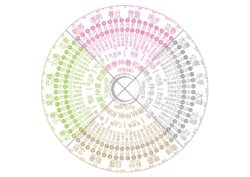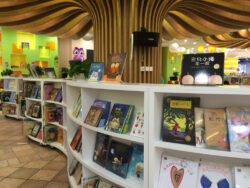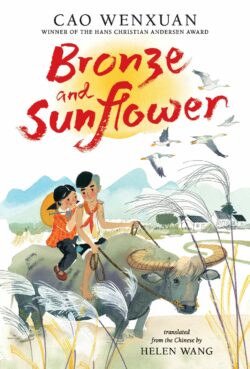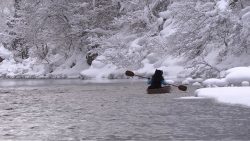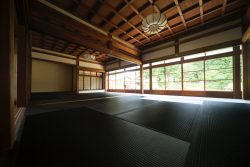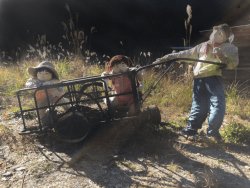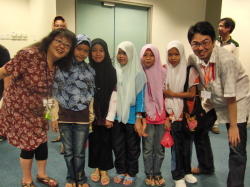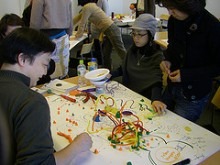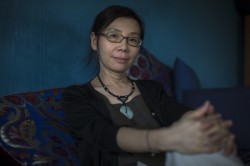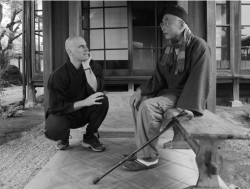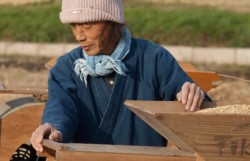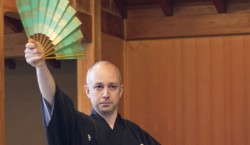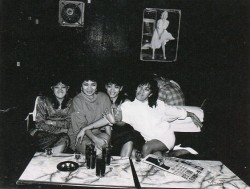Online Special
Charcoal-inspired Sumi Artistry
The Kyoto-based artist known simply as Hakama uses sumi (charcoal) as his medium in creating innovative artworks with a subtle but impressive aesthetic imbued by direct use of natural materials transformed by fire.
His work was featured in KJ 107, ‘Fire & Kyoto.’
Read MorePhotography Without Borders: Kyotographie 2023
One of the pleasures of KYOTOGRAPHIE has always been the opportunity to explore Kyoto spaces that are not normally open even to longtime residents, and to appreciate the imaginative ways in which the exhibitions have been staged in them. This year, the number of main venues has expanded to 15, while their geography has contracted, presumably to accommodate the influx of day trippers and international visitors. At the same time, the number of KG+ satellite exhibitions in far-flung locations around town has increased to 92, in addition to the 10 KG+ Select and 9 Special exhibitions.
Read MoreThe 72 Japanese micro-seasons
Ever since our ancestors gazed skywards or closely observed the wonders of the natural world around them, they saw patterns in cycles and found ways to recall them. Different cultures around the world have developed systems to mark the passage of time, and every calendar reveals something about how the people who created it related to the world around them. The ancient Japanese almanac of 72 micro-seasons provides a map of time that is a fascinating mixture of culture and nature.
Read MoreKyoto’s Suburban Rice-fields
As recently as the early 20th century, verdant and productive rice fields dominated the flat lands on the northern outskirts of Kyoto, squeezing small villages up against surrounding foothills. However, in post-war years this fertile farmland has been encroached on and overwhelmed by waves of suburbanization.
Read MoreShopping for Children’s Books in Asia
For a few years before the pandemic I was lucky enough to travel to Asia a few times—for work, for pleasure and as a translator of Chinese children’s books. Along the way, I developed a habit of doing quick surveys of the children’s books on sale in international airports, cities, and museums. …I was interested to see the situation in countries where there are generally more translated children’s books available than in the UK.
Read MoreAn Activist for Translated Children’s Literature
As Curator of East Asian Money at the British Museum, Helen Wang might seem an unlikely activist for global children’s literature. But September 2021 found her tweeting daily for World Kid Lit Month (@WorldKidLit), an initiative to promote picture books through young adult novels in English translation. She also collaborates with the China Fiction Book Club, Paper Republic, Translated World, the Global Literature in Libraries Initiative, and the Bai Megui Translation Competition, and she co-founded the blog Chinese Books for Young Readers.
Read MorePortrait of Eroshenko
Eroshenko’s experiences tell us of another era in which Japan was emerging as a cosmopolitan hub and in which Europeans might come to Japan to learn, rather than to teach. It was also an era in which contact and exchange were spreading across Asia, with ideas, people and objects all being coming to Japan from across the continent. However, the story also reveals that, whilst to some a life of travel and reliance upon friendship and the goodwill of others was an inspiration, in the eyes of the Japanese state it came to be seen as a threat.
Read MoreHunter Gathering with Tomoko Konoike
This is a guest post by Anna Jamieson at Japan Objects (www.japanobjects.com) This autumn, feast on the otherworldly paintings of Japanese artist Tomoko Konoike. Here at Japan Objects we spoke to Konoike about her show: ‘Hunter Gatherer’ now on at the Akita Prefectural Museum of Modern Art until November 25, 2018. Tomoko Konoike…
Read MoreInterview with Mitsuru Yokoyama, Tatami Artisan
“What I make, and all Japanese craftsman make ages with you. This is an investment in yourself, your life.”
Read MoreAyano Tsukimi’s “Kakashi-no-Sato”
Around 15 years ago Tsukimi made a scarecrow (kakashi) to protect her vegetable garden, basing it on her father’s appearance. Her neighbors enjoyed this whimsical inspiration, and since then she has continued to make these figures, many of them based on present or former village residents…
Read MoreShiraiwa-yaki Reborn
The new enterprise is called Wahee-gama, in honor of Sunao’s 19th century ancestors, and it is located in a secluded spot amidst rice fields at the edge of the foothills where Sunao’s ancestors built their kilns and fired their wares during Shiraiwa-yaki’s golden age.
Read MoreThe Nature and Experience of Sumi Arts
“The sense of liberation among participants is almost palpable, there are no expectations, no ‘shoulds,’ no senses of inferiority, the baseline for everyone is the same.”
Read MorePeace Engineering at Pangaea
“Would we be able to decrease the incidence of dangerous generalizations, based solely on one’s background, if there were a place where children around the world could meet and get to know each other? How could we make that possible?”
Read MoreEmerging Futures from Tohoku
MIZUHO TOYOSHIMA AND LUCINDA COWING
An Interview with Bob Stilger
Bob Stilger has been actively involved in creating spaces for people in Tohoku to gather and formulate new futures following the devastating earthquake and tsunami that transformed their lives.
Crossing Inter-Asian Cultural Divides
Karen Ma is the author of the recently published Excess Baggage, a novel about the lives of a Chinese immigrant family in Japan.
Read MoreWe Promise to Fix it Back
Will this catastrophe in Japan change us and lead to a more innovative, caring and interconnected way of living? Will the outbreaks of altruism and civic enthusiasm propel us to take similar steps? Will we demand ingenious forms of accountability?
Read MoreTone Poems: Joel Stewart’s Continuing Artistic Odyssey
The sheer variety of images ranges between the hyper-realistic and the abstract: a gleaming white-and-blue ceramic sake ewer that could almost be plucked from the panel, a quiver of glowing vertical lines reminiscent of Star Trek’s transporter in mid-operation.
Read MoreEverything You Need to Know about Japanese Wood and Woodworking
While reading Wood and Traditional Woodworking in Japan my initial reaction was visceral and immediate: why wasn’t a book like this available much earlier?
Read MoreEven in “Just Enough,” There is Abundance
For nearly 40 years Masanobu Fukuoka’s classic work, “The One-Straw Revolution” has lured people back to a traditional life of farming. Yoshikazu Kawaguchi, considered the leading proponent of Natural Farming in Japan, began his approach to farming by adapting Fukuoka’s method of forgoing plowing, fertilizers, weeding, and chemicals…
Read MoreStep Inside the World of Noh: An interview with Diego Pellecchia
“I’m hoping to transmit the ethics of Noh. Respect for the space and discipline, work ethics, orderliness, cleanliness. “
Read MoreWomen In-Between: Asian Women Artists 1984-2012
What does it mean to connect the fifty women artists of sixteen different Asian countries and regions represented in this exhibition by calling them “Women In-Between”?
Read More


